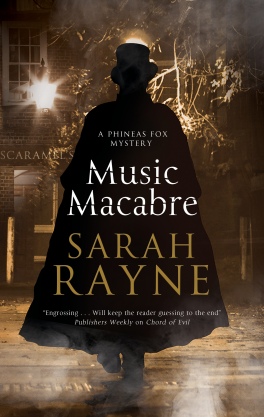 The creation of a villain can be a surprisingly fascinating exercise. There are so many roles they can be allotted. For starters, it’s usually necessary – and hopefully interesting for the reader – to show their multi-layered lives, because they aren’t always stalking hapless heroines through fog-bound Victorian streets, or laying macabre traps for unwary widows with useful fortunes. They have to do ordinary things like collecting the dry-cleaning or going to the dentist. Applying for mortgages, perhaps: ‘Occupation, sir? A doctor? Oh, well, Dr Crippen, we’re always happy to lend money to members of the medical profession…’ Or, possibly: ‘We’ll just get this house in Rillington Place surveyed before you buy it, Mr Christie…’
The creation of a villain can be a surprisingly fascinating exercise. There are so many roles they can be allotted. For starters, it’s usually necessary – and hopefully interesting for the reader – to show their multi-layered lives, because they aren’t always stalking hapless heroines through fog-bound Victorian streets, or laying macabre traps for unwary widows with useful fortunes. They have to do ordinary things like collecting the dry-cleaning or going to the dentist. Applying for mortgages, perhaps: ‘Occupation, sir? A doctor? Oh, well, Dr Crippen, we’re always happy to lend money to members of the medical profession…’ Or, possibly: ‘We’ll just get this house in Rillington Place surveyed before you buy it, Mr Christie…’
Alternatively, they can be sinisterly sexy gentleman with dangerously charismatic powers. George du Maurier, creating Svengali, gave the world a mesmeric character, as well as a new word for the English language, and even a legal tactic – the ‘Svengali Defence’, in which a defendant claims to be a pawn in the scheme of an overpowering and influential criminal mastermind. It also gave actors from Beerbohm Tree to John Barrymore and Donald Wolfit the chance to flex their fruitier acting techniques. (It probably helped the sales of Trilby hats too, although that’s a frivolous side speculation).
 If it’s to be a villainess, however, the author probably can’t do much better than base a killer on the seventeenth-century Hungarian countess, Elizabeth Bathory. Unlike Bram Stoker’s blood-quaffing villain, she doesn’t seem to have actually drunk blood. Instead, she slaughtered several hundred young girls so that she could bathe in their blood to preserve her youth and beauty. Her story has come down to the present day in fragments – mostly from the archives of the Court of Vienna where, because of their horrific content, the documents relating to her life and death were kept under lock and key for more than a century.
If it’s to be a villainess, however, the author probably can’t do much better than base a killer on the seventeenth-century Hungarian countess, Elizabeth Bathory. Unlike Bram Stoker’s blood-quaffing villain, she doesn’t seem to have actually drunk blood. Instead, she slaughtered several hundred young girls so that she could bathe in their blood to preserve her youth and beauty. Her story has come down to the present day in fragments – mostly from the archives of the Court of Vienna where, because of their horrific content, the documents relating to her life and death were kept under lock and key for more than a century.
But to take on – to incorporate into a plot – the man who is probably the best-known serial killer ever…? To present an aspect of him that nobody has thought of…?
It’s possibly fair to say that no mass-murderer has left quite such a wealth of dark legends as the man that nineteenth-century England called the Whitechapel Murderer, Leather Apron… The man the world came to know as Jack the Ripper.
Even today, the truth about Jack’s identity and his eventual fate remain the subject of discussion and speculation. Films have been made about him, books have been written about him, and the theories posed as to his motives and his identity range from the sensible and near-credible to the outright bizarre and the wildly fantastical.
He has, severally, been credited with being a person of some prominence – a leading doctor or surgeon – a member of the police force, or the government – a famous painter – a leading Freemason. Some theories connect him to royalty – even to having been royal himself.
When I started to write Music Macabre, the fourth outing for music researcher and historian Phineas Fox, I hadn’t really intended Jack to be a major player. Phineas, happily pursuing scholarly research into the life of Franz Lizst, was meant to unexpectedly come upon a fragment of music – a song – that seemed to have links back to the Ripper’s reign.
But somehow – very gradually and almost without my realizing it – Jack got into the story in a far stronger and much more insistent way than I had expected. He was present in every plot twist, he influenced characters’ motives and directed their actions – it was as if he peered out of every dark shadow surrounding the nineteenth century players, and reached out to the present-day through them.
Whoever he was, inevitably I faced the problem of what to do with him in the closing  chapters. Generally, a villain, no matter how charismatic or multi-layered, does have to be given his or her just deserts in the final chapter. It’s not exactly a convention that has to be observed, but it’s expected. Even if he/she isn’t tried and sentenced in the conventional manner, some kind of fate has to descend. This might cheat an author of writing a taut courtroom/prison cell scene, but it does open up a beautiful range of dramatic possibilities, including sending the culprit tumbling over the Reichenbach Falls, being submerged beneath the Paris Opera House, spontaneously combusting like Krook in Bleak House, or falling into the jaws of a crocodile as Captain Hook memorably did in Peter Pan. And Elizabeth Bathory got her come-uppance when she was bricked up in a lonely windowless room, in which she lived for four years.
chapters. Generally, a villain, no matter how charismatic or multi-layered, does have to be given his or her just deserts in the final chapter. It’s not exactly a convention that has to be observed, but it’s expected. Even if he/she isn’t tried and sentenced in the conventional manner, some kind of fate has to descend. This might cheat an author of writing a taut courtroom/prison cell scene, but it does open up a beautiful range of dramatic possibilities, including sending the culprit tumbling over the Reichenbach Falls, being submerged beneath the Paris Opera House, spontaneously combusting like Krook in Bleak House, or falling into the jaws of a crocodile as Captain Hook memorably did in Peter Pan. And Elizabeth Bathory got her come-uppance when she was bricked up in a lonely windowless room, in which she lived for four years.
But how do you deal out a fate to Jack the Ripper? Particularly when the theories and suggestions as to what happened to him and why his killing spree stopped are almost as thick on the ground as the speculations about his identity.
He died… He fled to an unnamed country… He fell into the Thames and drowned… He was hauled off to a lunacy asylum, either because he had not been recognized for who and what he was – or because he had been recognized, but was too well-known a figure to stand trial.
Could you even let him go, and allow yourself the fun of allotting to him one of the hammy Hammer finale lines? Fu Manchu, in the last reel of most of the film versions of Sax Rohmer’s books, comes to mind here – he had the way of raising an elegant hand, and portentously announcing that, ‘The world will hear from me again.’
But as far as anyone knows, the world never did hear from Jack the Ripper again. His legacy remains, though – it still reaches into the present, and it’s that dark legacy that brought about the writing of Music Macabre.
Source: Sarah Rayne Blog